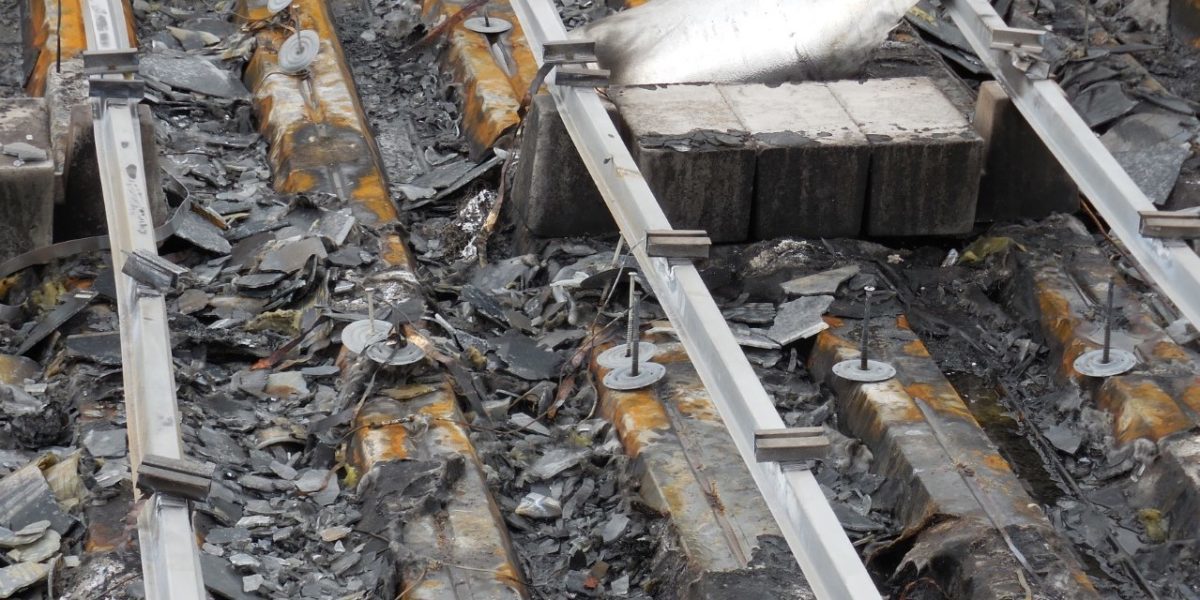From pv magazine USA.
In recent years, fires have played a major role in the US energy landscape, with $30 billion in wildfire damages becoming a major factor in Pacific Gas and Electric’s bankruptcy and Wal Mart suing Tesla over Tesla/SolarCity PV installations catching fire at Wal Mart locations in three states.
Last week, 20 solar panels on the roof of an Amazon fulfillment center in Fresno, California caught fire, although the official cause of the fire has not yet been released by officials.
The U.S. Fire Administration (USFA) does not specifically track fires from solar installations, filing them in the administration’s “other” category for causes. However, Lawrence Shaw, owner of High Powered Solar, a company that does residential solar preventative maintenance (PM) in Arizona, reached out to the USFA to request the data.
Shaw found that there were 56 recorded solar system fires in 2018, the most recent year of reported data, which is up 36% from the 41 recorded in 2017. In 2015, the first year that Shaw got data from USFA, there were 25. Since 2015 the Fire Administration has recorded 155 fires caused by solar installations, with 84 being residential systems and 71 being non-residential.

Of those 155 fires, roughly 33% occurred in California, Arizona and Nevada, states which are among the highest when it comes to wildfire hazard potential.
Operating out of Phoenix, Shaw believes that regular infrared (IR) imaging of residential projects could cut instances of fire down immensely. Regular IR testing can identify hotspots on a system that could lead to thermal events down the line.
IR imaging is a technology that many utilities already prioritize and use, with Arizona Public Service (APS) employing it on all utility assets. The company prioritizes the process in its residential interconnection language, including in section 9.5: “Customer shall protect, operate and maintain the GF safely, and in accordance with all applicable laws as well as current and prudent engineering and electric utility operations practices and methods prevailing in the region where the GF is installed.”
Popular content
This means that since APS employs IR imaging at utility sites, homeowners who own solar are required to have IR scans periodically. However, in speaking with a source at APS, Shaw found that the company’s words don’t always match its actions.

On the roughly 1,000 low-income homes with APS-owned solar on their rooftops, including those in the City of Flagstaff, an area found to be at greater risk of wildfire, aren’t having IR testing done as a part of annual system safety checks. So, while the utility expressly values IR testing, conducts IR testing on large-scale assets and requires it of solar owners under its service, it neglects the systems of low-income homeowners in high-risk areas.
Moreover, Shaw relates that APS’ interconnection language is some of the strictest that he has seen among utilities, leading him to believe that the bulk of residential systems in the United States are not subject to IR testing.
Because of this, Shaw believes that the solar industry sorely needs a standard for residential preventative maintenance includes annual visual inspections and infrared imaging to look for system hotspots.
“Infrared imaging has been proven to identify hotspots before they become more serious in nature,” said Shaw. “This is backed by scholarly literature and decades of data in industries other than just solar. Provided the camera is of sufficient quality and being used correctly, this approach is the surest and best way to detect the 25 known PV module safety defects during a visual inspection.”
This article was amended on 24/04/20 to remove the name of the company which installed the 20 panels which caught fire at the Amazon fulfillment center in Fresno, California. The change was made at the request of the installer company.
This content is protected by copyright and may not be reused. If you want to cooperate with us and would like to reuse some of our content, please contact: editors@pv-magazine.com.



3 comments
By submitting this form you agree to pv magazine using your data for the purposes of publishing your comment.
Your personal data will only be disclosed or otherwise transmitted to third parties for the purposes of spam filtering or if this is necessary for technical maintenance of the website. Any other transfer to third parties will not take place unless this is justified on the basis of applicable data protection regulations or if pv magazine is legally obliged to do so.
You may revoke this consent at any time with effect for the future, in which case your personal data will be deleted immediately. Otherwise, your data will be deleted if pv magazine has processed your request or the purpose of data storage is fulfilled.
Further information on data privacy can be found in our Data Protection Policy.